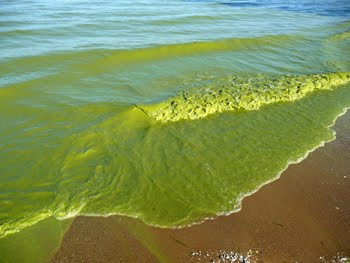Overview Cyanobacterial Harmful Algal Blooms
Harmful algal blooms (HABs) are a global threat to freshwater ecosystems, water resources, and human health. The interplay of microbial, ecological, and chemical processes causes toxin production and formation of lake “dead zones”. We seek to better understand this problem by integrating new approaches, including community ‘omics, to a local natural laboratory, Lake Erie, which has experienced massive blooms in recent years. We are particularly interested in the potential controls on toxicity, the dynamics of hydrogen peroxide within the blooms, the diversity of Microcystis strains and the bacteria they interact with, and the identification of new toxins and other natural products in blooms.
To learn more about the history of the Great Lakes, check out this essay, “It’s Time to Decolonize the Great Lakes.”
Graft vs Host Disease (GVHD)
Graft vs. host disease (GVHD) is a complication that can arise following allogeneic bone marrow transplants, resulting in dysbiosis of intestinal microbial communities among other symptoms. Working with collaborators in the Medical School, we use omics techniques to study the effects of GVHD on microbial communities of the intestinal tract to better understand the factors that drive dysbiosis and identify mechanisms for reducing the effects of GVHD.



